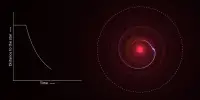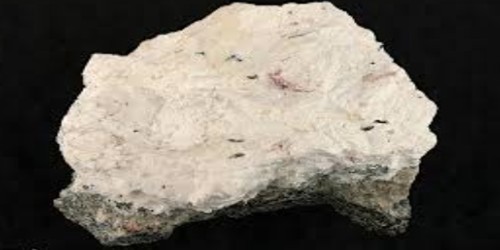Zachary Estlack and a research team from mechanical engineering and space sciences at the Universities of Utah and California, Berkeley created a microfluidic organic analyzer to find signs of life outside of Earth and to clinically monitor astronaut health in a new report that has just been published in npj Microgravity. To verify the analyzer’s functionality and technological readiness, the team ran thorough environmental tests in a range of gravity atmospheres.
To verify the performance of the microfluidic analyzer, planetary scientists created simulations of settings with lunar, Martian, zero, and hypergravity conditions that are usually experienced during a parabolic flight. The findings of the study open the door for the integration of microfluidic equipment in a variety of potential space mission scenarios.
Microfluidics in space
Microfluidics present a major technical innovation for in vitro biomedical research. By controlling fluid quantities at the nano-/micro-scale across extremely sensitive biochemical tests, the approach is also well suited in astrobiology for spaceflight examinations of biological fingerprints while retaining a small physical footprint. The small tools are therefore very appealing for studying the biological traces of extraterrestrial life.
Planetary scientists have already gathered and studied ice samples in depth from Saturn and Jupiter’s moons Enceladus and Europa with microfluidic devices. Such analytical instruments are also useful to monitor flight crew health.
Bioengineers are working to increase the gravity sensitivity and power-efficiency of microfluidic bioanalysis devices for adaptable and portable in-situ space exploration.
Device configuration
Estlack and colleagues developed a microfluidic organic analyzer system (MOA) with an integrated programmable microwave array (PMA) alongside glass microchannels and a laser-induced fluorescence (LIF) detection system.
In order to determine the analytes of interest and determine the device’s commercial viability, they concentrated on a Technology Readiness level flying format instrument system during the development of the organic analyzer.
In order to evaluate the functionality of microfluidics in microgravity, the findings of the first two flights in a series of five microgravity flights are examined in this paper. By autonomously labeling, incubating, and delivering samples to an integrated capillary electrophoresis chip and detecting laser-induced fluorescence inside the same setup, the microfluidic valve arrays assisted in the preparation and regulation of samples within the instrument.
In total, the instrument integrated a microfluidic organic analyzer, a microvalve analyzer array containing an integrated chip for laser-induced fluorescence detection, and a sensor suite.
Testing the device under simulated parabolic flights
In order to make sure that all testing circumstances were watched over and controlled, the research team looked at the general functioning characteristics during the flight. Pressure decreased with ascent in the plane simulation, which led to a general decrease in temperature that had an impact on the microfluidic device. However, the instrument’s overall performance was only slightly impacted by the alterations to the operational parameters.
Estlack and the team conducted flow rate analyses during lunar, Martian and hypergravity periods of the flight. With rising gravity, they observed modifications to the initial backflow and peak flow rate. The results of the simulations demonstrated that the gravitational environment had no impact on the instrument’s performance.
Rating the instruments performance
The scientists performed automated dilutions to assess the devices’ performance for upcoming biomarker array testing based on their capability for precise volume control under various gravity situations. They completed three stages of the dilution sequence and recorded them during flight.
They delivered a buffer and a fluorophore in the appropriate ratios to a storage well during the first two steps. In the last step, they vacuum-transferred a microvolume of the diluted fluorophore past the fluorescence detector into built-in detecting channels. The studies conducted in Martian gravity or microgravity followed a particular dilution procedure and varied only slightly.
Enhancing the Technology Readiness level on the instruments
The space scientists and bioengineers integrated the results from the first two flights to improve the Technology Readiness of the microfluidic organic analyzer. Their successful performance under microgravity justified their inclusion in spaceflight missions.
For instance, the instrument’s pumping performance was unaffected by falling gravity, while the instrument’s performance was negatively impacted by rising gravity in the area of the microvalve array. However, the organic analyzer was unaffected by all of the different conditions.
The study’s findings demonstrated the instrument’s suitability for uses in the detection and determination of extraterrestrial chemical and biological analytes. The instrument’s suitability for space deployment was demonstrated by its insensitivity to a gravitational field under simulated lab circumstances.
Outlook
In this way, Zachary Estlack and colleagues studied the technology readiness level of a microfluidic instrument for space missions to explore extraterrestrial biochemical signatures and monitor astronaut health in the future.
Future planned analyses under microgravity and hypergravity, including studies of capillary electrophoresis and astronaut crew health monitoring by simulated clinical tests to discover biomarkers of particular interest, will be impacted by the lessons learnt from this maiden trip.
The results of these investigations and the next flights will show how versatile the instruments’ capabilities are both during and after the scheduled space missions are completed.
















